www.johntyman.com/peru/18.html
 |
CULTURES IN CONTEXT PERU The Incas and Prehistoric Cultures IV: INCA CULTURE 4.9: Ollantaytambo. |
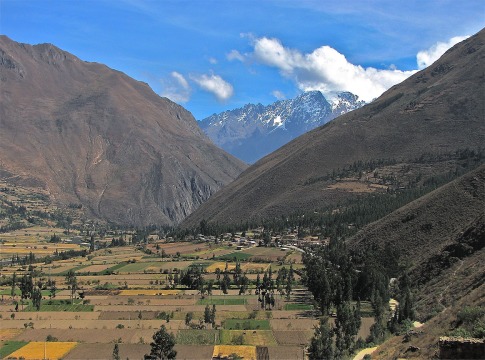
182. Ollantaytambo, 68 kms northeast of Cuzco, controlled access to the Sacred Valley from the north. It was surrounded by mountains, and its main access routes paralleled the Urubamba River. The Incas also built roads connecting the site with Machu Picchu on the west and Pisac to the east |
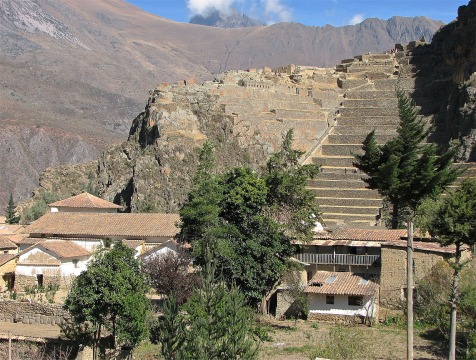
183. During the Inca Empire, Ollantaytambo was designated the personal estate of Emperor Pachakuti, who conquered the region in mid-15th century, rebuilt the town and laid out the ceremonial complex on “Temple Hill”. Ollantaytambo served him as an agricultural, administrative, social, religious and military centre. |
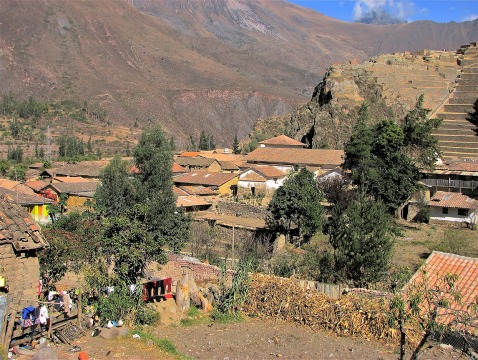
184. In the Urubamba valley below Temple Hill he built a new town, and commissioned extensive terracing and irrigation works. The town provided lodging for the Inca nobility, while the agricultural terraces were farmed by yanakuna, retainers of the emperor. |
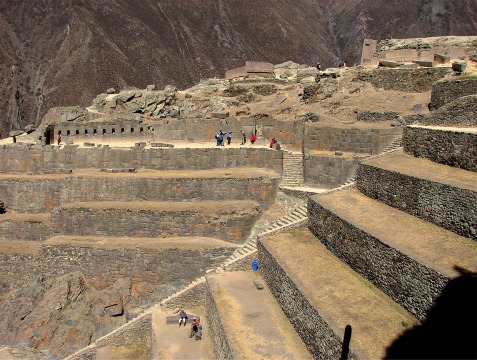
185. Temple Hill is sometimes referred to as “The Fortress”, but this is a misnomer, as the main functions of this site were religious. The access to the ceremonial centre was gained through a series of terraces that climb to the top of the complex. These were used not to produce food but to grow flowers for ceremonial use. |
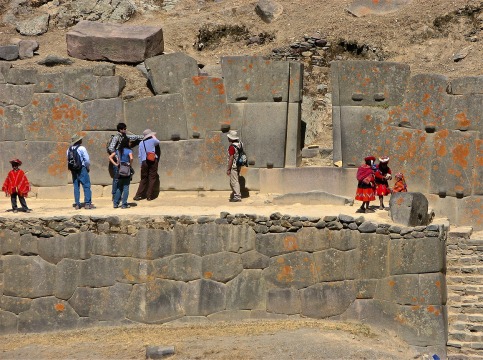
186. The terraces of the temple sector, being part of a royal estate, were built of cut and fitted stone while the agricultural terraces nearby were built of undressed fieldstone. The temple is accessed by a stairway of 17 terraces, which ends with one that has a half-finished gate and an “Enclosure of Ten Niches”. |
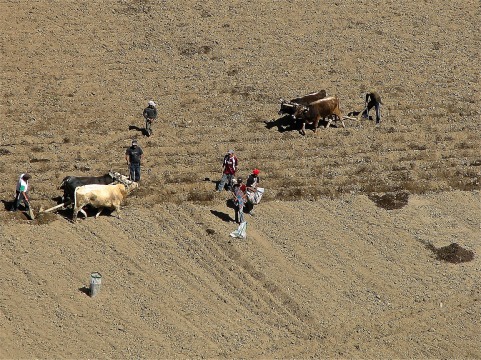
187. The valleys of the Urubamba and Patakancha Rivers here are covered by a network of agricultural terraces which start at the bottom of the valleys and climb up the surrounding hills. Terracing allowed farming on otherwise unusable hillsides; and also allowed the Incas to take advantage of the different ecological zones created by variations in altitude. (Farming on the valley bottom.) |
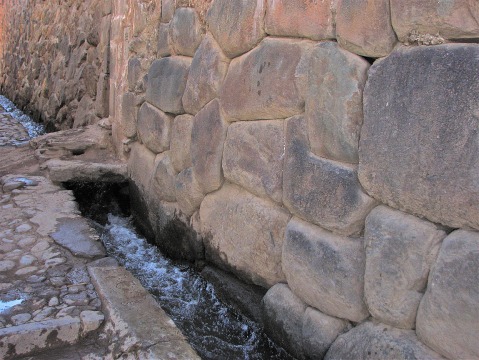
188. Water was channelled, from streams and springs nearby, to supply both the town and the temple terraces. These channels still supply water to the town, flowing in ditches alongside roads and walkways. |

189. A shrine which celebrates the importance of water to the community is on the main channel, below Temple Hill, but above the town. |
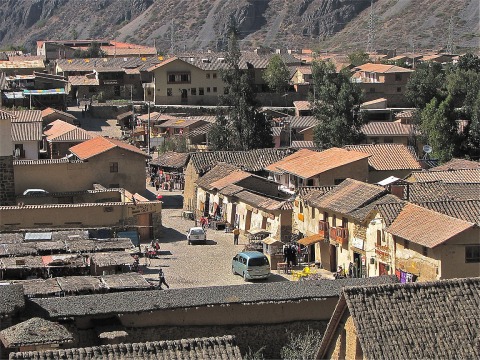
190. The town of Ollantaytambo at the base of Temple Hill dates from the late 15th century. It displays an Inca-era grid of cobblestoned streets and adobe buildings. It is the only Inca settlement whose dwellings are almost all still occupied today. |
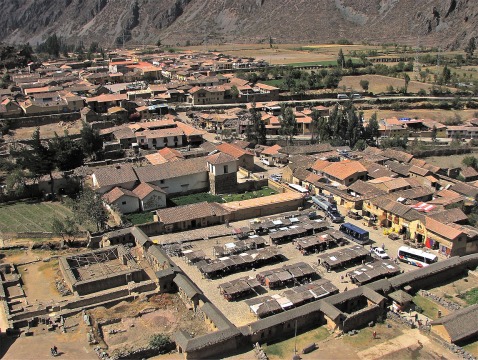
191. It was laid out in trapezoidal shape, which exaggerates its scale, with four longitudinal streets crossed by seven parallel streets, and it has some of the oldest continuously occupied dwellings in South America. |
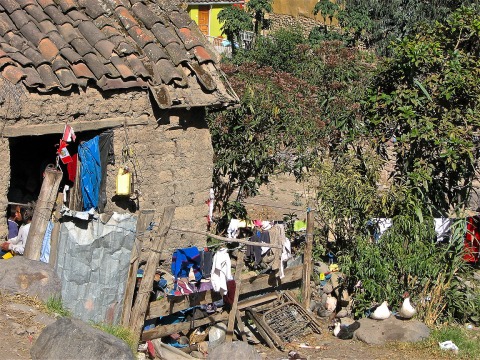
192. Many of the older and humbler homes today are showing their age. In Inca times they would have been thatched. |
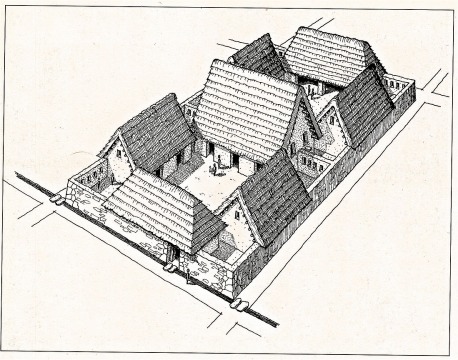
193. All blocks in the southern half of the town were (as in this illustration) built to the same design. Each comprised two walled compounds with four one-room buildings around a central courtyard. (Reconstruction courtesy Adriana Von Hagen and Craig Morris.) |
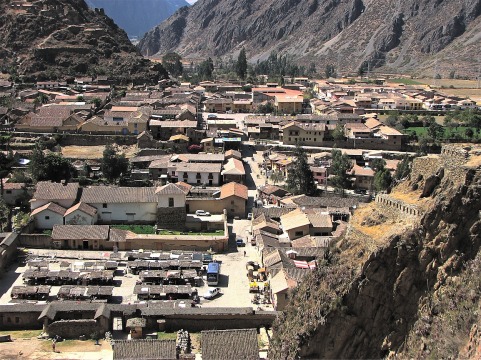
194. At the centre of this grid the Incas built a large plaza up to four blocks in size. It was open to the east and surrounded by halls and other town blocks on its other three sides. It disappeared in colonial times as it was built over and replaced by a smaller plaza nearer to the edge of town. |
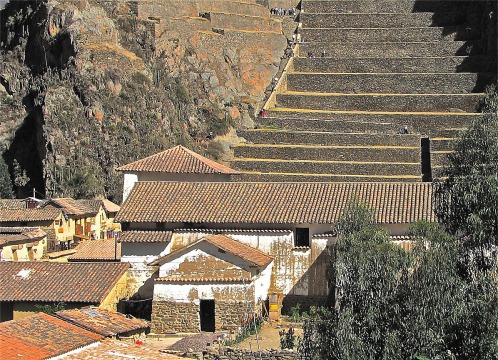
195. Similarly, as they did in Cuzco, the Spanish built the Catholic church in the foreground on a sacred Inca site, wishing to stamp the authority of the Christian faith … notwithstanding the amount of Inca blood that was shed in so doing! |
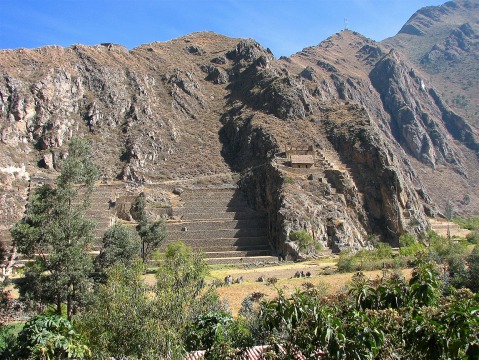
196. During the Spanish conquest of Peru, Ollantaytambo served as a temporary capital for Manco Inca, leader of the native resistance against the conquistadors. He fortified the town and its approaches in the direction of Cuzco, which had already fallen to the Spanish. (The approach to Ollantaytambo.) |
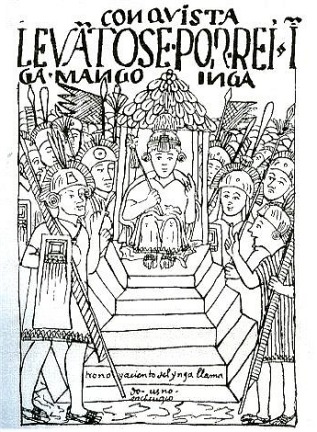
197. The Battle of Ollantaytambo took place in January 1537, between the forces of Manco Inca and a Spanish expedition led by Pizarro. A former ally of the Spaniards, Manco Inca had rebelled in May 1536, and besieged the Spanish garrison in Cuzco. To end this standoff, the Spaniards mounted a raid against the emperor's new headquarters at Ollantaytambo. The expedition included 100 Spaniards with horses, and some 30,000 Indian auxiliaries against an Inca army more than 30,000 strong. (Manco sitting on the Inca throne in Cuzco during his rebellion.) |
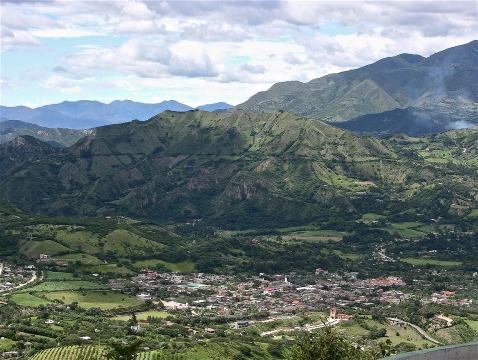
198. The Incas managed to deny the Spanish forces access to a set of high terraces, and they flooded the Spanish position below to hinder their cavalry. Severely pressed and unable to advance, the Spaniards withdrew by night to Cuzco. Despite this victory, the arrival of Spanish reinforcements forced Manco Inca to later abandon Ollantaytambo and seek refuge in a heavily forested region further north, at Vilcabamba (in present-day Ecuador) where he established the small independent prototype Inca State which survived until 1572. (Vilcabamba today) |
![]()
Text and photos by John Tyman
Intended for Educational Use Only.
Contact Dr. John Tyman at johntyman2@gmail.com
for information regarding public or commercial
use.
![]()
www.hillmanweb.com
Photo processing, Web page layout, formatting
and hosting by
William
Hillman ~ Brandon, Manitoba ~ Canada